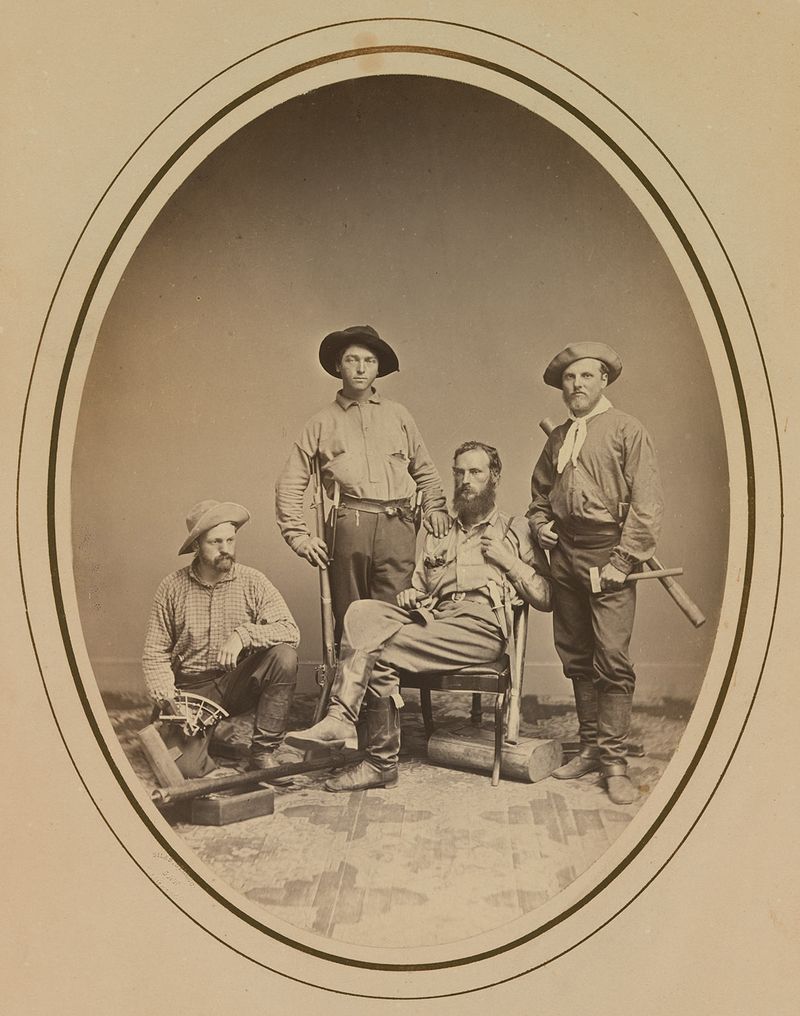Clarence King: Man of Maps, Mines, and Mystery

Clarence King (shown on far right) was a talented paradox.
As a friend of Henry Adams, John Hay, Clover Adams, and Clara Hay, King was the fifth member of the clique that called itself “The Five of Hearts.” However, upon King’s death in 1901, Henry Adams and John Hay discovered that King had been hiding his marriage to an African American woman in New York. Using the alias James Todd, King had married Ada Copeland in 1888, and they eventually had five children. That he would keep an interracial marriage from his best friends was perhaps a sign of the times, but it also was indicative of the degree to which King was an independent thinker and doer.
Another side of King's personality was his sometimes out-of-place sense of fashion. As biographer Patricia O'Toole notes in The Five of Hearts, King's behavior during the excursions of the Fortieth Parallel survey signified the cultural component of his mental makeup:
An aesthete with a particular fondness for painting, King saw to it that photographers and landscape painters accompanied the survey, and he strove to give his camps an air of refinement. In the evening, after a long, gritty day in the field, he donned silk hose, gleaming shoes, and a suit freshly pressed by his valet. Materializing at the campfire, he looked to an astonished Henry Adams like “a bird of paradise rising in the sage-brush.”
A graduate of Yale, King was a man of science who also stepped easily into literature. While conducting the survey, he corresponded with William Dean Howells, who published some of King's stories of the American West in the Atlantic. King employed contour lines in his mapmaking, giving the viewer a notion of the terrain. He was unafraid of testing science in the lab and, in the face of Charles Darwin's ideological sway, O'Toole records that King believed not only in long-term evolution, but also that “cataclysmic events such as earthquakes had also left their mark on the evolution of plants and animals.” Clarence King's work with the Fortieth Parallel survey (1867–77) was a critical episode in the geographical and geological decipherment of the American West.
In 1878, King was appointed director of the United States Geological Survey, but he did not stay long. He was always plagued by money problems, first having to support his mother, and later, feeling compelled to keep up a certain lifestyle among his wealthy and aristocratic friends. King borrowed heavily and later lived with the specter of his hidden New York family behind him. Always in search of wealth, King led forays into mining that never met with the great success of which he dreamt.
John Hay's comments to Henry Adams (cited in The Education of Henry Adams from Hay's letters) upon King’s death in 1901 show simultaneously immense respect and heartfelt pity for the potential of their now-lost friend, calling King, “the best and brightest man of his generation, with talents immeasurably beyond any of his contemporaries . . . with everything in his favor but blind luck, hounded by disaster from his cradle.”
-Warren Perry, National Portrait Gallery
Cited:
The Education of Henry Adams by Henry Adams
The Five of Hearts by Patricia O'Toole
For further reading:
The Explorer King: Adventure, Science, and the Great Diamond Hoax--Clarence King in the Old West by Robert Wilson